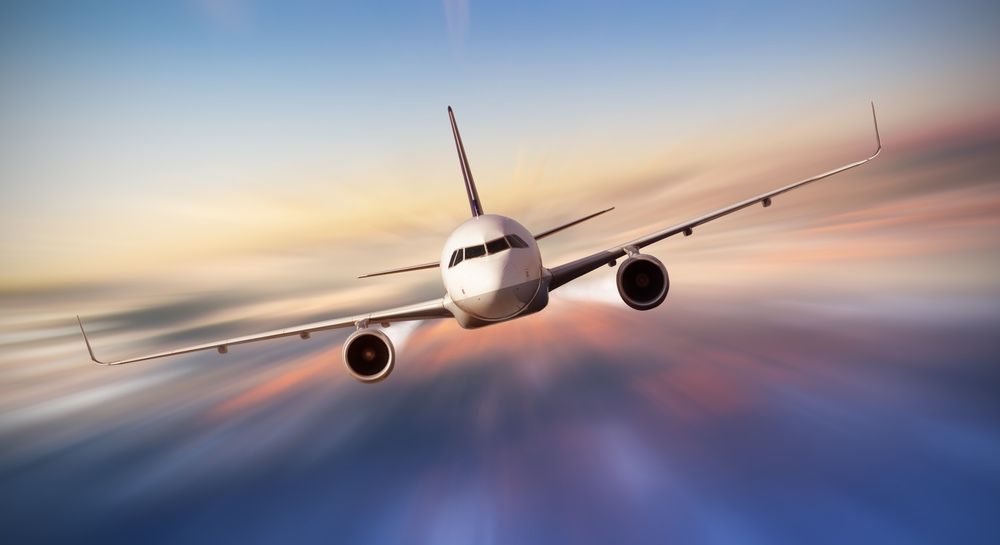Climate Change Is Likely to Make Air Travel a Lot Bumpier

If you've been an airline passenger, you probably know the experience.
All is well, as you cruise through the air, and then there's the slightest of bumps. Then another. Then a few more, increasing in intensity, until the seat belt sign illuminates and the captain asks everyone to take their seats and fasten their seat belts. Maybe it doesn't end there; perhaps the plane starts to jolt enough that a few of your fellow passengers emit involuntary gasps, and then a nervous silence descends until the situation clears.
According to some studies, roughly one in four people have at least some fear of flying, with turbulence cited frequently as a factor. Turbulence can be more than merely unnerving: Conservative estimates suggest that each year in the United States it can result in 687 minor injuries and 38 serious ones among flight attendants, and 120 minor and 17 serious injuries to passengers.
The combination of injuries, damage to airframes and cabins, flight delays, inspections, repairs, and post-accident investigations has cost US airlines up to $200 million annually.
Well, buckle up, because a new study concludes that so-called clear-air turbulence is likely to get worse and more frequent — and the cause is global warming.
RELATED: The Mental Health Toll of Climate Change Could Be Dire
To understand why, it's helpful to have a sense of what causes turbulence in the first place.
Sign up for the Live Science daily newsletter now
Get the world’s most fascinating discoveries delivered straight to your inbox.
Picture the atmosphere not as a homogenous whole, but as a series of layers, moving in different directions and at different speeds, piled on top of each other.
Paul Williams of the University of Reading and author of the new study said wind shear within those layers of atmosphere is the primary cause of clean-air turbulence.
"What that means is that wind speed increases with altitude," he said. "Basically, the atmosphere keeps on increasing in speed up to an altitude of 33,000 feet or so. So, the different layers of atmosphere are flowing over each other, and if the wind shear is too strong, the atmosphere simply cannot contain the relative speed difference between the layers and it becomes unstable. Small irregularities in the flow can grow exponentially in time and eventually become chaotic and turbulent."
Climate change is likely to exacerbate this phenomenon because it is increasing the contrast between the layers of atmosphere.
"When you're at altitudes of 30-40,000 feet, the tropical regions — the low latitudes — are warming more than the Arctic region, the high latitudes," said Williams, who added that nearer Earth's surface the Arctic is warming more than other regions. "It's that temperature difference that drives the jet stream, but as that temperature difference increases, the accelerated warming in the tropical regions causes the jet stream to blow even faster and that's what increasing the instability and causing more turbulence."
Williams used climate models to simulate how a doubling of pre-Industrial Age carbon dioxide concentrations in the atmosphere would impact clear-air turbulence in the mid-latitudes of the North Atlantic during the winter, when the phenomenon tends to peak.
Light turbulence is likely to increase by 59 percent, he found, while light-to-moderate turbulence might increase by 75 percent, moderate by 94 percent, moderate-to-severe by 127 percent, and severe by 149 percent.
His results are published in the journal Advances in Atmospheric Sciences.
"It's interesting, isn't it?" Williams said, referencing the increase in severe turbulence. "It does often happen in climate change that the extremes increase more than the averages."
RELATED: Extreme Climate Change Millions of Years Ago Caused Mammals to Shrink
There's some reason to remain hopeful that increased turbulence outside your plane might not lead to more bare-knuckled rides inside it.
The turbulence forecasts used by airlines for preflight planning are now about 75 percent accurate, according to Williams.
"It's better than tossing a coin," he said. "But clearly there's another 25 percent we could squeeze out, and I fully expect the accuracy of those forecasts to improve in the coming decades, and that will give pilots better information over which parts of the atmosphere to avoid."
Pilots might soon have access to on-board, ultraviolet laser technology that might help them "see" clear-air turbulence, Williams added.
But until those forecasts improve and that technology is deployed, it's best to remember the advice you're given after boarding: Stay seated and keep your seat belt on whenever possible. Your flight's likely to get a lot bumpier.
Originally published on Seeker.












